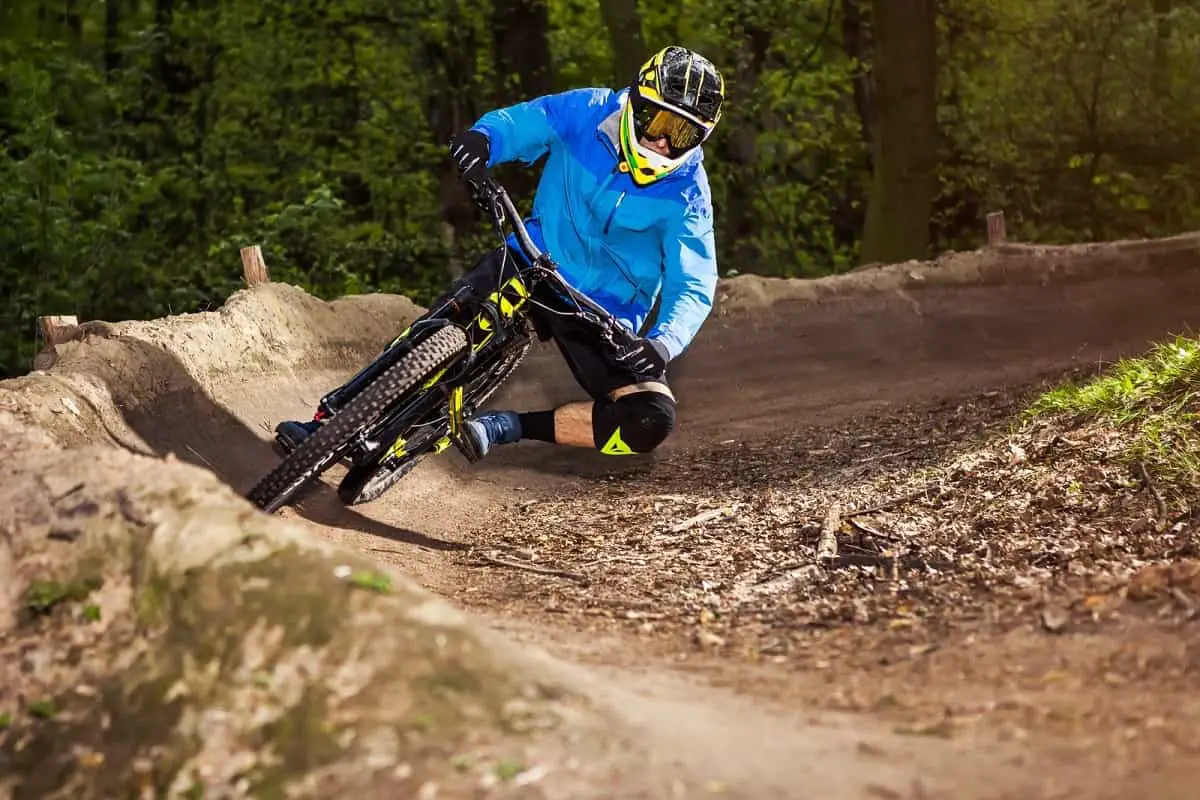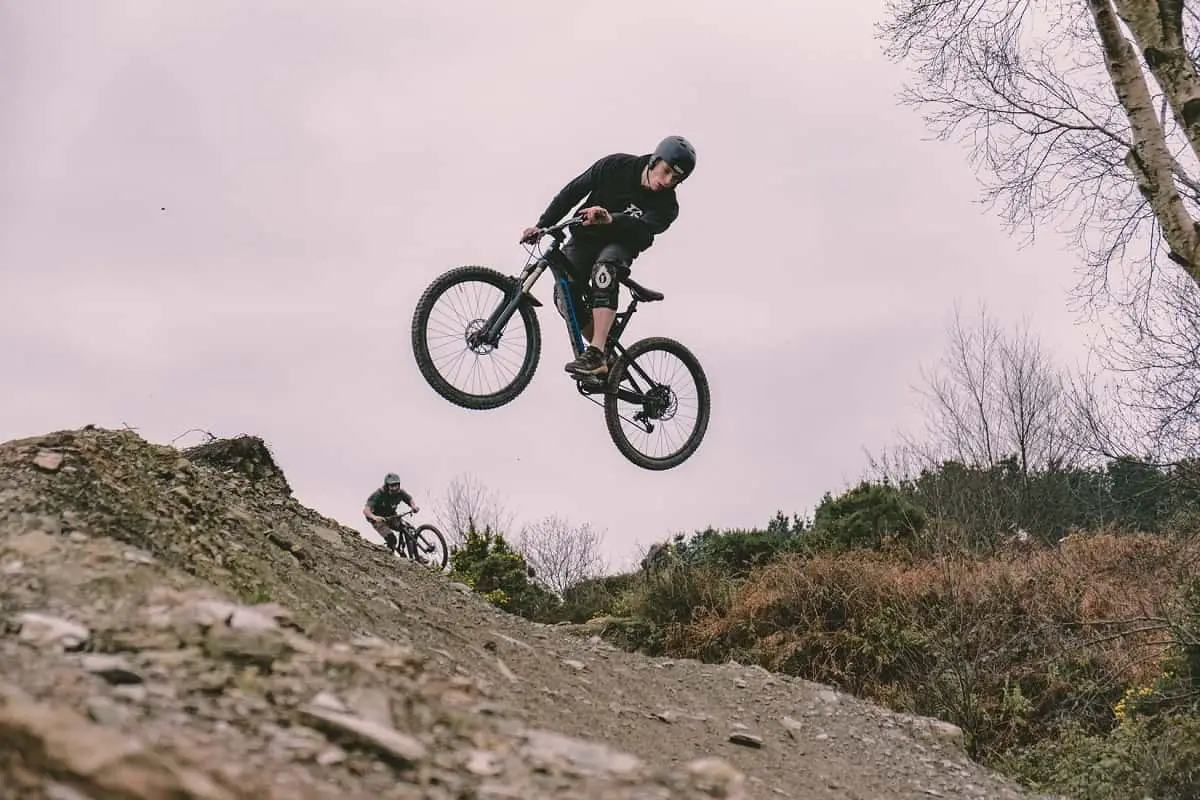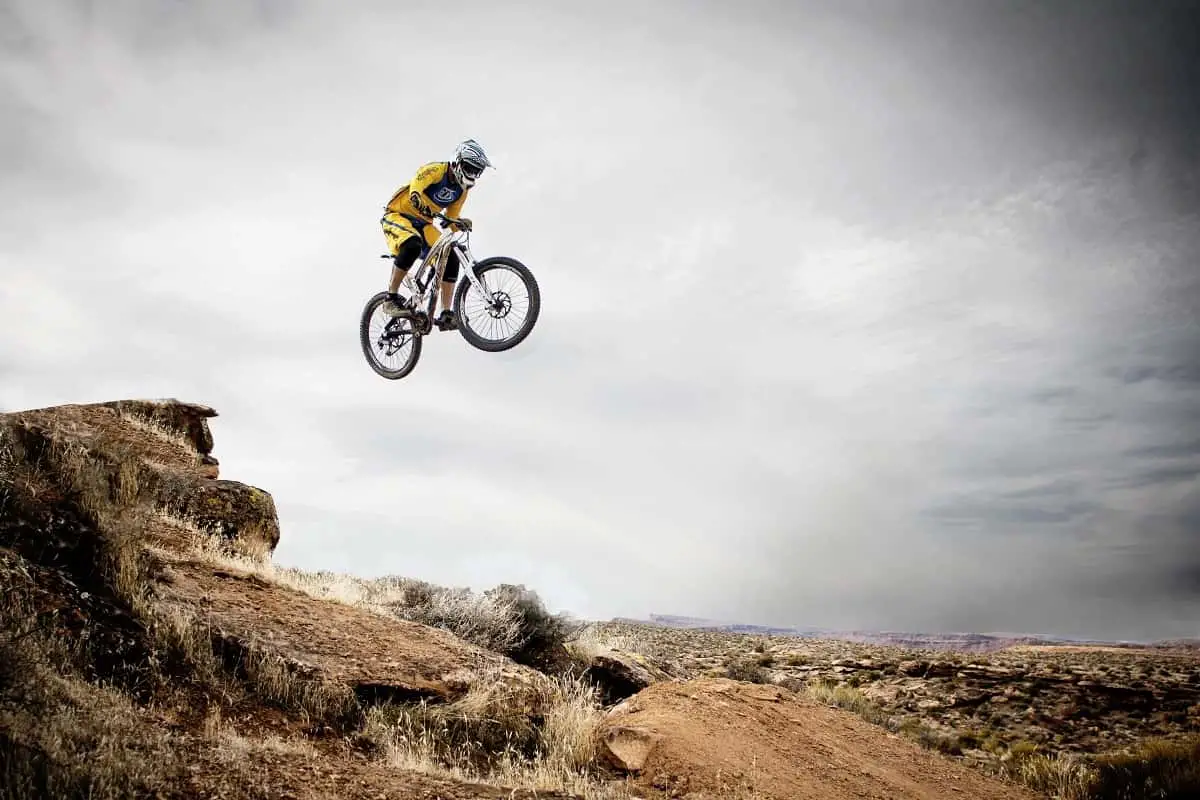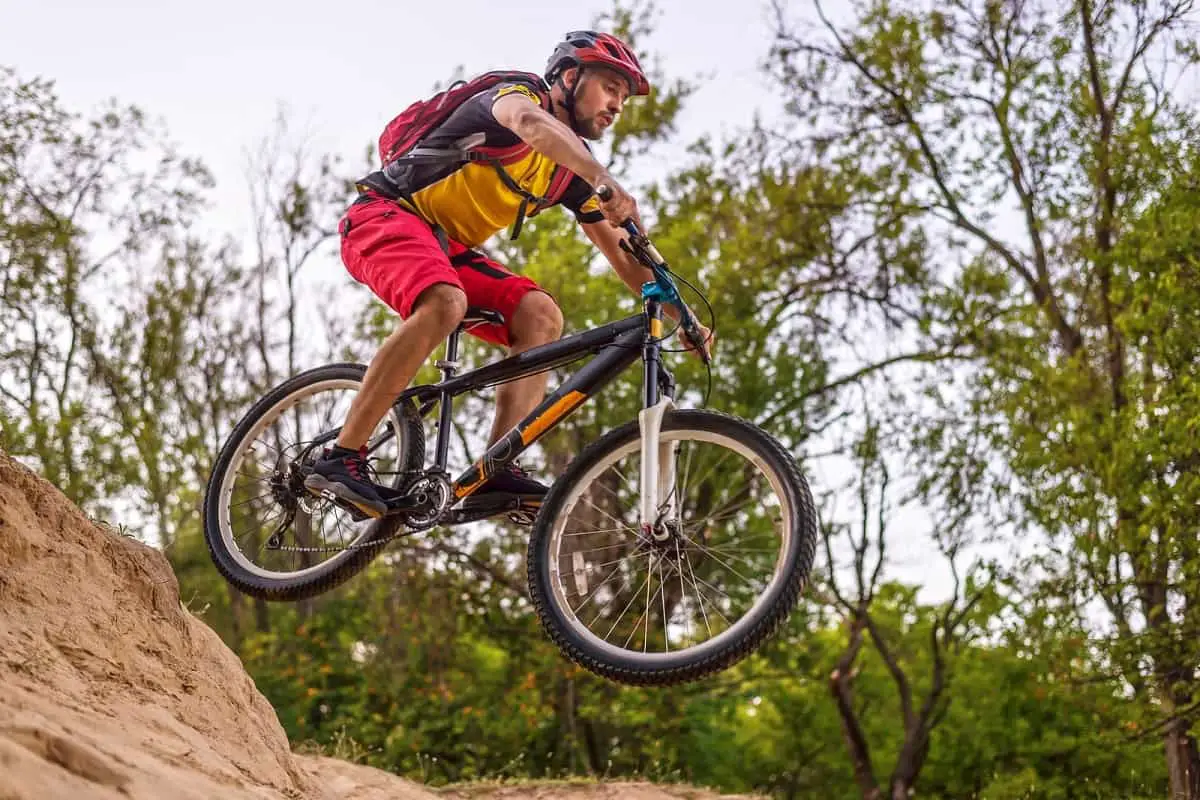Full Face Vs Open Face Helmet MTB
Wearing a helmet while mountain biking is a good start, however, wearing the right helmet is essential. No matter how uncool you think they look, helmets can really save your life. Research studies show that bicycle helmets can reduce the risk of serious head injury by up to 60%.
Falling from your bike is not uncommon, and while broken bones or torn ligaments are easy to fix, your head and your brain are so fragile that you need the right protection to avoid any possible complications.
But, how do you choose between a full face Vs open face helmet MTB? With all the different options out there, it can be challenging to find a helmet suited for you and your individual needs.
Are all helmets equally protective? What kind of helmet should you choose?
KEY TAKEAWAYS
* The choice between a Full Face or Open Face MTB Helmet will be determined by your riding style.
* You should use full face helmets if you like to go fast downhill.
* A removable chin bar helmet, which can convert from a full face to an open face, is worth considering.
* Not all full face MTB helmets are certified to the Downhill mountain biking standard (ASTM F1952).

Disclosure: As an Avantlink and Amazon Associate, we earn from qualifying purchases. Disclosure Statement.
Page Content
Full Face Vs Open Face Helmet MTB
While there are several types of helmets suitable for different disciplines and riding styles, one of the biggest differences is the one between full face and open face helmets.
If you are not sure which one is best for you or if you feel confused, don’t despair! In this essential guide, we aim to help you understand the differences between full face and open face mountain bike helmets, including their pros and cons, to make it easier for you to determine the kind of protection you need to increase your safety.
What Kind Of Rider Are You?
Before getting into the specifications of the two different types of the helmet so that you can pick one, you should define the kind of rider you are. Do you tend to ride on country trails, or are you more geared toward fast-paced downhill biking? Do you like speed? Each one will require different protection levels.

Full Face MTB Helmets
Full faced helmets offer you the kind of protection you need when you are a hardcore mountain biker, speeding downhill or pushing yourself to the limits. They protect your entire head, chin, and face. However, because of the heightened protection, it might feel a little cumbersome, which might cause you to feel uncomfortable during and after the ride.
But this is just a little compromise that you have to deal with for the sake of your safety. The sooner you start with a full face helmet, the sooner you will get used to it.
RELATED: Best Downhill Mountain Bike Helmets
When you are worried about hitting your face, go for such helmets. But most importantly, you should use full face helmets if you like to go downhill fast. Falling from such rides will most likely end up with you hitting your face and a full face helmet can help you prevent serious complications.
If you are a versatile cyclist, you might want to consider going for a “convertible mtb helmet“. These kinds of helmets can convert from a full face to an open face thanks to the removable chin bar. This allows you to get the protection and comfort you need, depending on your riding situation at the time.
Watch the video below, “Full Face vs Half Lid for Trail Rides” to see a rider crash into a tree at medium pace, and see the damage done to his full face helmet. Imagine if he had been wearing an open face helmet.
Pros
The biggest benefit when using a full face helmet is the protection it provides. By wearing one, you’ll be guaranteed higher levels of protection than with open face helmets. The hard shell will ensure your brain, chin, teeth, and face won’t suffer as much from major injuries if you fall.
Also, maybe less important, but still worth mentioning, because your mouth is protected, you won’t swallow those annoying flies so easily when riding.
- Full protection: mouth, chin, and teeth completely covered.
- No insects swallowed during the ride!
SUGGESTED: Mountain Bike Helmets For Big Heads
Cons
Of course, even full face helmets come with their drawbacks. First of all, it is easy to fall into the trap of feeling overconfident, but you have to remember that even wearing such a highly protective helmet does not make you invincible. Be careful all the time, and do not lose focus unnecessarily, to avoid preventable accidents and reduce your risks.
Additionally, another drawback of full faced helmets is that they can be more expensive than other kinds of helmets, but I found a really great one that is inexpensive on Amazon. Depending on the price, you might even find some helmets that are more comfortable, less bulky, but that still guarantee maximum protection.
This content was originally published on headsdontbounce.com. If it appears on another website, it is a violation of the copyright owned by headsdontbounce.com.
Another thing to consider is that full face helmets can get hot, because of the reduced ventilation. You can solve the problem by maintaining speed, but that can also be dangerous. You will need to get used to using them, as they are bulkier and heavier than open faced helmets.
- There is a danger of taking greater risk.
- These helmets can be more expensive.
- Not so comfortable, bulky and heavy.
- Reduced ventilation.

Open Face MTB Helmets
As the name suggests, open face helmets only cover your head, leaving your face exposed.
Also called half-shell, they are suited for mountain bikers that perform less aggressive cross-country and trail riding. There are different types of open face helmets, depending on the specialty you tend to perform and aimed at protecting you best in each situation.
To give you a better idea, here’s a comparison between open face helmets for road biking and those specifically designed for mountain biking.
SUGGESTED: Mountain Bike Helmet Vs Road Bike Helmet
While similar to road bike helmets, open face mountain bike helmets may seem bulkier, yet they are very light and aerodynamic.
Most models also present visors to shield your eyes from the rain or sun. Because the mountain bike riding position is more upright, that doesn’t present any problems to vision. Road helmets lack visors for this reason. Additionally, the texture of a mountain bike open face helmet will often be rougher and flatter, while road helmets tend to be glossy, meaning that the helmet will slide over the pavement, reducing the risk of bad injuries.
Most riders tend to prefer open face helmets as they are considered to be much more comfortable compared to full face ones. Also, they are better suited in hotter climates thanks to the venting holes. However, keep in mind that not all open face helmets are the same.
When you decide to go for the cheaper options, you might have to deal with uncomfortable and not-so protective helmets. Before making a purchase, make sure you assess the trade-offs between price, performance, and quality.
All in all, these helmets are good if you are more of a casual rider, but they do offer less protection. If you are a cyclist who tends to push the limits, then you had better go for a full face helmet.
SUGGESTED: Mountain Bike Helmets With MIPS
Pros
Open faced helmets offer you the benefit of offering you adequate protection while ensuring proper ventilation and not compromising on comfort. If you ride in warmer climates or do not take too many risks, they can be a good option for you.
- Lightweight.
- They offer proper ventilation.
- Great for warmer climates.
- Adequate protection.
- Easy to carry around and take off.
Cons
The biggest problem of open faced helmets is that they do not protect your face and are not suitable for hardcore cyclists. If you are a casual rider who tends to go for easier trails, that should not be a problem. It is up to you to consider the benefits and drawbacks and choose the appropriate helmet for you.
- They do not protect your face: teeth and chin highly exposed.
Helmets With A Removable Chin Guard
You could always go for the best of both worlds by getting an MTB helmet with a removable chin bar. This allows you to remove the chin bar when you need endurance riding uphill, then replace the chin bar for added safety when doing the downhill run.
While wearing a helmet should not be an option for every cyclist, the choice on the kind of helmet you should be wearing ultimately comes down to your personal preferences and it will be your decision. There are several factors that can affect your final choice, including your riding style and your abilities, but also the money you are willing to invest.

How To Choose A Helmet?
When purchasing a helmet, make sure you choose one that is properly certified and made of high-quality materials designed for protection. Sometimes, it is good to invest a bit more for your safety.
You should make sure your helmet fits you, which is why you should try on multiple helmets before making your purchase. A correctly fitting helmet is probably the single most important aspect of helmet safety. Be sure to read our article ‘How To Know Your Helmet Size‘ to be sure you buy the right size.
Don’t worry too much about looking unstylish or feeling a bit uncomfortable at the beginning. At the end of the day, what is most valuable is your health and your safety. As the saying goes, “better to be safe than sorry”. If you want to feel safer, go for a full face helmet. If you are more of a laid-back kind of rider, you can be good with an open face helmet.
Summing Up
While adequate protection is essential, it is also important to point out that wearing the right helmet, even with maximum protection does not guarantee you invincibility. That means that you will still need to be careful, ride to your ability, keep your focus and take the right precautions during the ride.
I hope we have covered the dilemna of ‘full face Vs open face helmet MTB’ to your satisfaction. If you enjoyed this article, take a look at the related reads below for some more interesting reads!
Related Reads:

